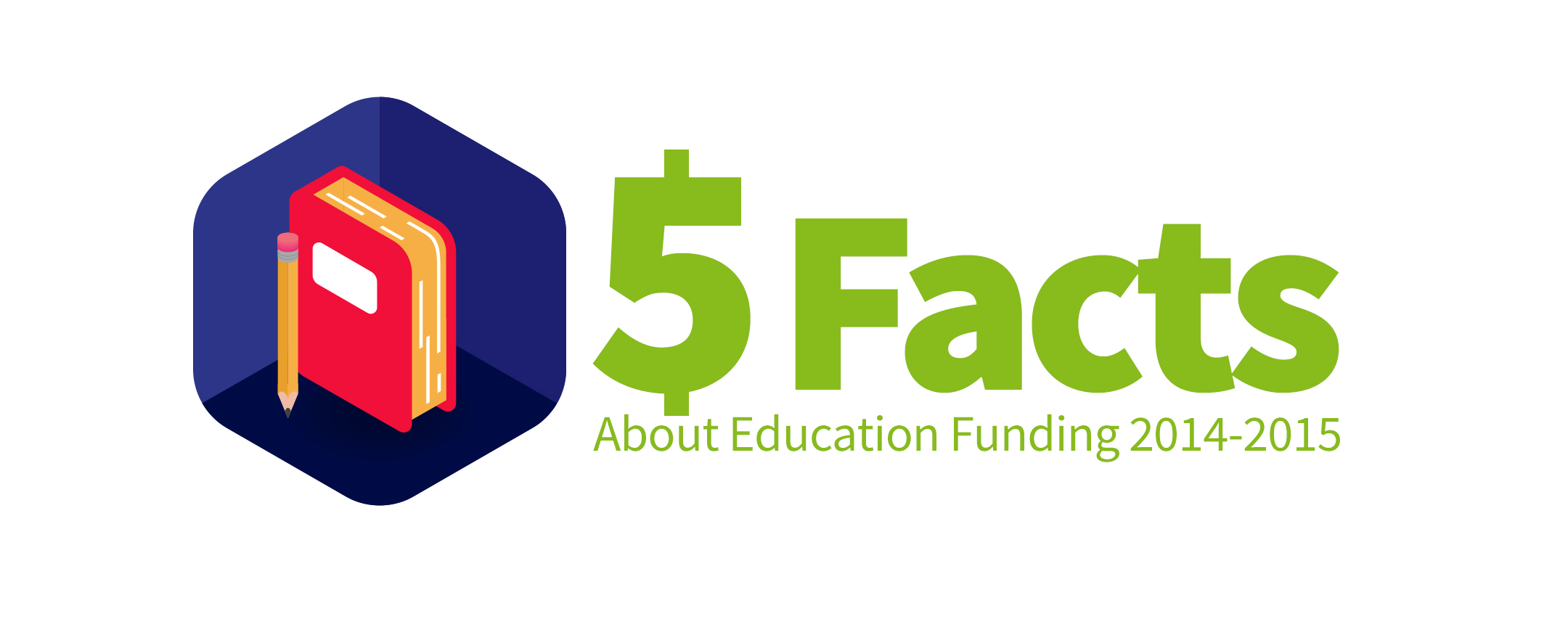School funding is often discussed without reference to actual data. The Freedom Foundation has assembled facts from state resources to give documented answers to common questions about school funding.
Because data about resources provided in schools lags by nearly a year, 2014-15 is the most recent school year for which data is available. It is worth noting that the state budget adopted for the current 2015-16 school year includes another significant increase in funding for public schools.
Since the 2012 McCleary decision, state K-12 education spending has increased by 34 percent.
One: For operational costs, school districts received an average of $10,938 per student.
Statewide average state, local and federal operating funds per pupil, 2014-2015
| Fund Source | 2011-2012 | 2012-2013 | 2013-2014 | 2014-2015 |
| Local Taxes (levies) | $1,935 | $2,014 | $2,039 | $2,122 |
| Local Non-tax | $331 | $335 | $330 | $331 |
| State General Apportionment (specified staff per 1,000 students and payroll) | $5,320 | $5,348 | $5,721 | $5,955 |
| State Special Purpose (special education, English language learning, poverty) | $1,202 | $1,235 | $1,418 | $1,551 |
| Federal General purpose | $54 | $52 | $46 | $51 |
| Federal Special purpose (poverty, special education) | $885 | $837 | $800 | $804 |
| Other | $88 | $99 | $111 | $124 |
| Total | $9,816 | $9,920 | $10,465 | $10,938 |
Source:
- Office of the Superintendent of Public Instruction, School Apportionment & Financial Services, “Percent and Per Pupil of General Fund Revenues and Other Financing Sources by County: Fiscal Year 2014-15.”
Two: For buildings and operations, school districts received an average of $15,105 per student.
Funding per pupil from all funds for operating and capital
| Year | Total |
| 2009-2010 | $12,450 |
| 2010-2011 | $12,664 |
| 2011-2012 | $13,098 |
| 2012-2013 | $13,586 |
| 2013-2014 | $13,871 |
| 2014-2015 | $15,105 |
Source:
- Office of the Superintendent of Public Instruction, School Apportionment & Financial Services, “Financial Reporting Summary 2014-2015,” Table Eight.
Three: Average teacher pay is $66,064 plus benefits averaging $9,513.
Average Statewide Compensation
| Certificated Instructional Employees | 2011-2012 | 2012-2013 | 2013-2014 | 2014-2015 |
| Average state-paid certificated instructional employee salary per FTE | $52,260 | $52,256 | $52,996 | $52,525 |
| Levy-funded additional salary per FTE | $11,978 | $12,406 | $12,676 | $13,539 |
| Total Average Salary | $64,238 | $64,662 | $65,672 | $66,064 |
| Insurance benefits per FTE (health benefits $768 per month) | $9,216 | $9,216 | $9,216 | $9,216 |
| Mandatory benefits (social security, etc.) | $9,608 | $9,763 | $11,263 | $11,448 |
| Administrators | ||||
| State actual allocation for administrator salary by district | here | here | here | |
| Average wage, benefits per FTE; additional salary per individual | here | here | here | here |
| Classified Employees | ||||
| State actual allocation by district | here | here | here | |
| Average wage, benefits per FTE; additional salary per individual | here | here | here |
Note: Because the state uses a mostly uniform salary allocation model, “average salary” varies based upon the number of teachers at the various levels of seniority and education experience. The increases or reductions are commonly due to retirement rates of the highest paid teachers and the hiring rate of beginning teachers.
“FTE” means “Full Time Equivalent” employee
Sources:
- Office of the Superintendent of Public Instruction, School Apportionment & Financial Services, “School District Personnel Summary Reports 2014-2015,” Table Nineteen.
- Office of the Superintendent of Public Instruction, School Apportionment & Financial Services, “Organizing and Financing of Washington Public Schools 2015,” Pg. 73.
- Jami Lund, Freedom Foundation, Grading the Teacher Union Contracts, “How much above the state salary is the unaccountable, levy-funded wage enhancement for each district reviewed?”
- Office of the Superintendent of Public Instruction, School Apportionment & Financial Services, “School District Expenditures of Levy and Levy Equalization Resources Amounts and Purposes for the 2008-09 School Year.” Slide 30, Office of Superintendent of Public Instruction K-12 Financial Resources.
- Technical Advisory Committee to the Joint Task Force on Basic Education Finance, “How Much TRI Pay Can All Basic Education Teachers Earn?” July 21, 2008.
- Actual school employee salaries, including both state-funded wages and levy-funded wage enhancements as reported by OSPI.
Four: School districts have one teacher for every 18 students and one employee for every 9.4 students.
Staff-per-Student Ratios Statewide
| 2011-2012 | 2012-2013 | 2013-2014 | 2014-2015 | |
| Students per teacher | 18.65 | 18.52 | 18.40 | 18.09 |
| Students per aide | 98.91 | 99.10 | 96.27 | 91.95 |
| Total FTE employees | 100,449 | 101,446 | 103,873 | 107,405 |
| Total FTE students | 984,285 | 987,757 | 1,002,609 | 1,013,525 |
| Total Students per Employee FTEs | 9.80 | 9.74 | 9.65 | 9.44 |
Sources:
- Office of the Superintendent of Public Instruction, School Apportionment & Financial Services, “Personnel Summary Profiles 2014–2015.”
- Office of the Superintendent of Public Instruction, School Apportionment & Financial Services, “Statewide Personnel Assignment Summary Profiles 2014-15.”
- Office of the Superintendent of Public Instruction, School Apportionment & Financial Services, “School Districts Ranked by FTE Enrollment 2014-15.”
Five: The average school levy collection from property owners is $4.26 per $1,000 in assessed value, providing $2,239 per student. District borrowing totals average $14,810 per pupil.
Local Levies
| 2012 | 2013 | 2014 | 2015 | |
| Statewide average excess general fund (operating) levy rate per $1,000 for schools | $2.54 | $2.74 | $2.66 | $2.60 |
| Statewide total levy average rate per $1,000 (Includes general, debt service, transportation & capital) | $4.12 | $4.44 | $4.36 | $4.26 |
| Statewide average excess general fund levy funds per student | $2,014 | $2,089 | $2,132 | $2,239 |
| Long-term liabilities (debt) per pupil statewide | $9,301 | $9,363 | $9,585 | $14,810 |
Sources:
- Office of the Superintendent of Public Instruction, School Apportionment & Financial Services, “School District Property Tax Levies 2015 Collections.” Includes amount for each district.
- Office of the Superintendent of Public Instruction, School Apportionment & Financial Services, “All funds long-term liabilities per pupil 2012-2015.” (Total for each district also listed)
Other Resources:
- Score, graduation rates and demographic data for each district and school
- State Accountability Index listing districts’ scores on key factors
- Persistently lowest achieving schools listed as “priority” or “focus”
- Student enrollment trends by district 2008-2009 through 2011-2012
- Collective Bargaining Agreements for many schools
- Which WA districts get the best results for their funds? See the Center for American Progress results for each district’s Return on Educational Investment










